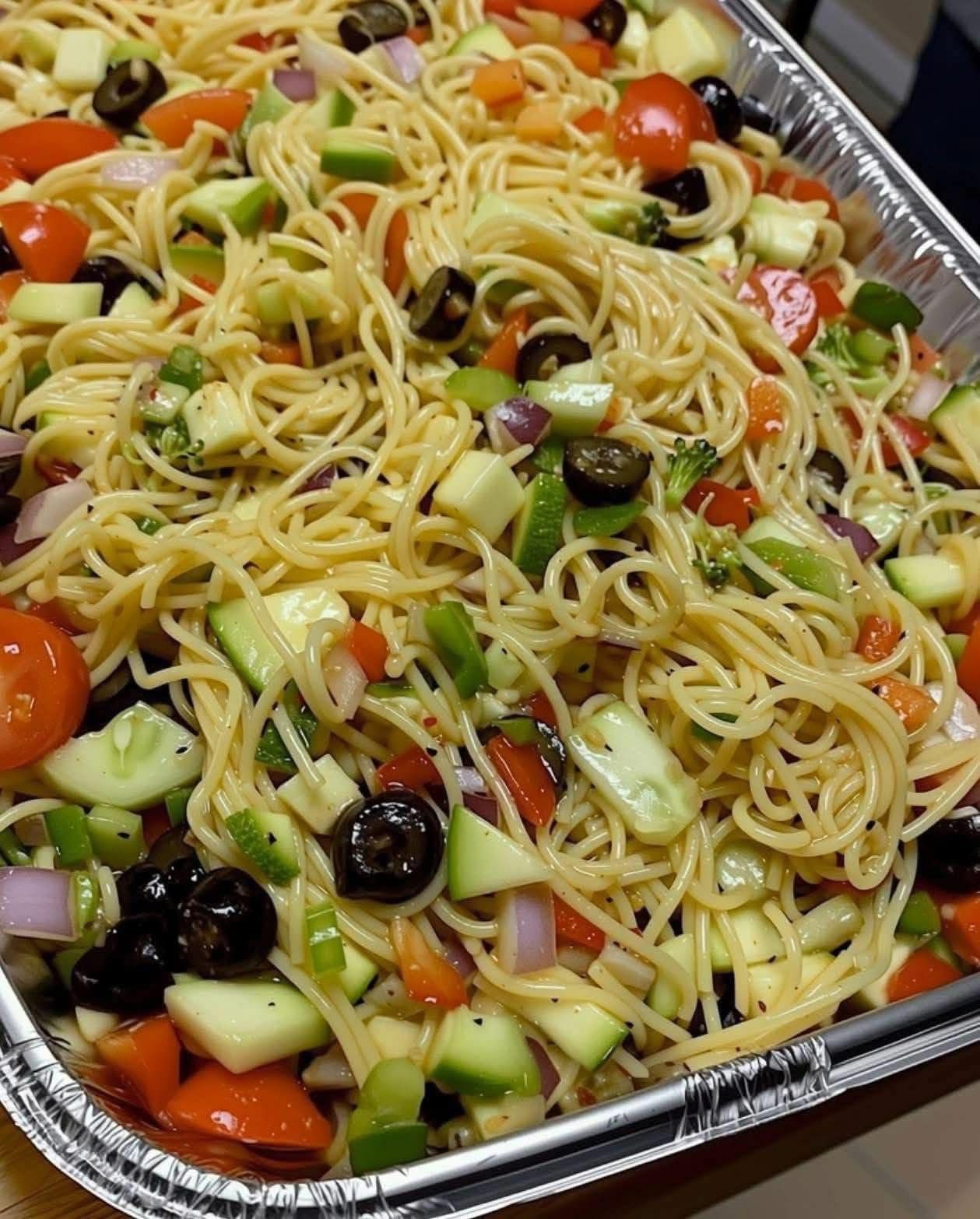Of course! While “Spaghetti California” isn’t a single, universally defined classic like Spaghetti Carbonara, the name typically evokes a dish that is fresh, bright, and light, often featuring ingredients like fresh vegetables, olive oil, garlic, and sometimes seafood or chicken.
It’s a modern, “Californian” take on pasta that emphasizes fresh, high-quality produce.
Here is a recipe that captures the essence of what “Spaghetti California” means—it’s vibrant, healthy, and bursting with flavor.
Spaghetti California (with Shrimp and Avocado)
This version features succulent shrimp, creamy avocado, and a bright lemon-garlic sauce, embodying a fresh, West-Coast vibe.
Prep Time: 15 minutes
Cook Time: 15 minutes
Servings: 4
Ingredients
· 12 oz spaghetti or linguine
· 1 lb large shrimp (16/20 count), peeled and deveined
· 3 tbsp olive oil, divided
· 4 cloves garlic, thinly sliced
· 1 pint cherry or grape tomatoes, halved
· 1 ripe avocado, diced
· 1/4 cup fresh basil, thinly sliced
· 2 tbsp fresh parsley, chopped
· 1 lemon (zest and juice)
· 1/4 tsp red pepper flakes (optional)
· Salt and freshly ground black pepper to taste
· Grated Parmesan cheese for serving (optional)
Instructions
- Cook the Pasta: Bring a large pot of salted water to a boil. Cook the spaghetti according to package directions until al dente. Before draining, reserve about 1 cup of the starchy pasta water.
- Sear the Shrimp: While the pasta cooks, pat the shrimp dry and season with salt and pepper. In a large skillet, heat 2 tablespoons of olive oil over medium-high heat. Add the shrimp and cook for 1-2 minutes per side, until pink and opaque. Remove the shrimp from the skillet and set aside.
- Make the Sauce Base: Reduce the heat to medium. Add the remaining 1 tablespoon of olive oil to the same skillet. Add the garlic and red pepper flakes (if using) and sauté for 30-60 seconds until fragrant but not browned.
- Wilt the Tomatoes: Add the halved tomatoes to the skillet with a pinch of salt. Cook for 3-4 minutes, just until they begin to soften and release their juices.
- Combine and Emulsify: Add the drained al dente spaghetti and the cooked shrimp to the skillet. Toss to combine. Add the lemon zest, lemon juice, and about 1/2 cup of the reserved pasta water. Toss continuously, allowing the starch and liquid to create a light, glossy sauce that coats the pasta. Add more pasta water if needed.
- Finish with Freshness: Remove the skillet from the heat. Gently stir in the diced avocado, fresh basil, and parsley. The residual heat will warm them through without making the avocado mushy.
- Serve Immediately: Divide among plates. Season with an extra crack of black pepper and serve with a wedge of lemon and Parmesan cheese if desired.
Alternative Versions of “Spaghetti California”
The name is flexible! Here are other interpretations:
· “California-Style” Spaghetti with Chicken and Artichokes: Use sliced grilled chicken breast instead of shrimp. Add 1 cup of marinated artichoke hearts (quartered) and a handful of baby spinach in the last step.
· Creamy California Spaghetti with Sun-Dried Tomatoes: Create a creamy sauce by adding 1/2 cup of heavy cream or half-and-half to the garlic, followed by 1/2 cup of chopped sun-dried tomatoes. Toss with the pasta, fresh basil, and top with grilled chicken or shrimp.
· Vegan California Spaghetti: Omit the shrimp. Add roasted zucchini, yellow squash, and bell peppers along with the tomatoes. Use a generous drizzle of high-quality olive oil and fresh herbs to finish.
What Makes it “California”? Key Characteristics
· Abundance of Fresh Produce: Tomatoes, avocado, fresh herbs.
· Lighter Sauces: Olive oil- or lemon-based instead of heavy cream or rich meat sauces.
· Lean Proteins: Grilled shrimp, chicken, or plant-based options.
· Bright, Zesty Flavors: Lots of citrus, fresh herbs, and garlic.
This dish is perfect for a quick, impressive weeknight dinner that tastes like sunshine on a plate. Enjoy
